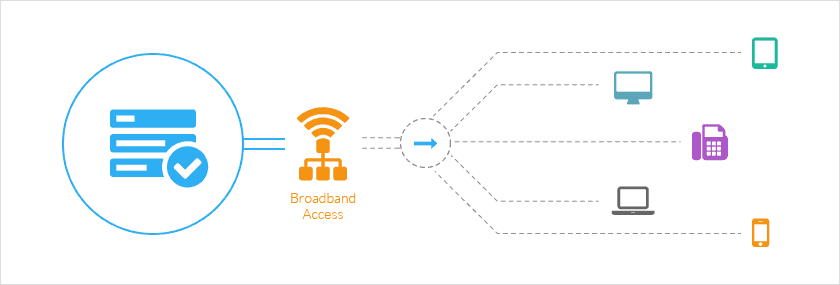
Despite international efforts to expand the availability of broadband Internet access worldwide, a new report from the United Nations Broadband Commission shows that the process is proceeding extremely slowly.
The 2015 UN report finds that 3.2 billion people across the globe have broadband connections, up only 300,000 from 2014. That means that only 43% of the world’s population currently has high-speed Internet connectivity; the rest are unable to benefit from the social and economic advantages available to those with dependable web access. The total number of people throughout the world without broadband access is estimated at around four million.
The problem has nothing to do with connectivity in developed nations, as broadband Internet access in the first and second worlds is close to saturation. The issue is connectivity in developing nations where only 35 percent have Internet access, and the problem is particularly evident in the 48 nations designated by the UN as “least developed countries” where 90 percent of residents have no access at all. For example, countries in sub-Saharan Africa are woefully underrepresented, with fewer than two-percent of the population in Guinea, Somalia, Burundi, Timor Leste and Eritrea having access to the Internet.
The nations with the highest rates of connectivity remain largely unchanged from last year’s report, with the top countries all located in the Middle East or Asia. South Korea tops the list with 98.5%, followed by Qatar (98%), Saudi Arabia (94%) and the United Arab Emirates (90%). If you were expecting to see the United States topping the list, the survey only measured connectivity in developing nations but recent figures have shown the US in the mid-80% range. The only area where the US leads the world is in the growth of the “Internet of Everything” with 6.1 connected devices per capita, well above comparable nations in Western Europe.
When it comes to nations with the highest percentage of Internet usage by individual residents Europe leads the way, boasting all of the top-ten countries ranked by usage (led by Iceland at 98%, and Norway and Denmark at 96% apiece – the United States was 16th, at 87%). Asian and Middle Eastern nations are also at the top of the list for mobile broadband usage (Macao with three mobile subscriptions for every resident, Singapore with 1.5 subs per resident, and Kuwait with 1.4 – the United States was in 19th place, with just under one mobile subscription per resident).
The UN Broadband Commission blames the low connectivity rates in many developing nations on a number of factors. Primary among them, of course, are limited financial resources and the lack of a dependable communications infrastructure in poor nations. However, the report also blames a lack of useful content in native languages, the absence of coherent Internet access development strategies in the least developed countries, and a worldwide focus by telecoms on maximizing financial proceeds through migration of existing customers to 3G and 4G networks, rather than on meeting what the UN says are the companies’ obligations to expand coverage networks to underserved nations.
This was the fifth annual report produced by the Broadband Commission. Not much change is expected in the 2016 report; the UN recommendations are aimed at creating an effective global Internet access development strategy for the much longer term.